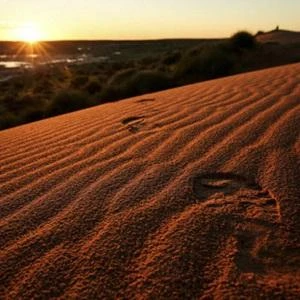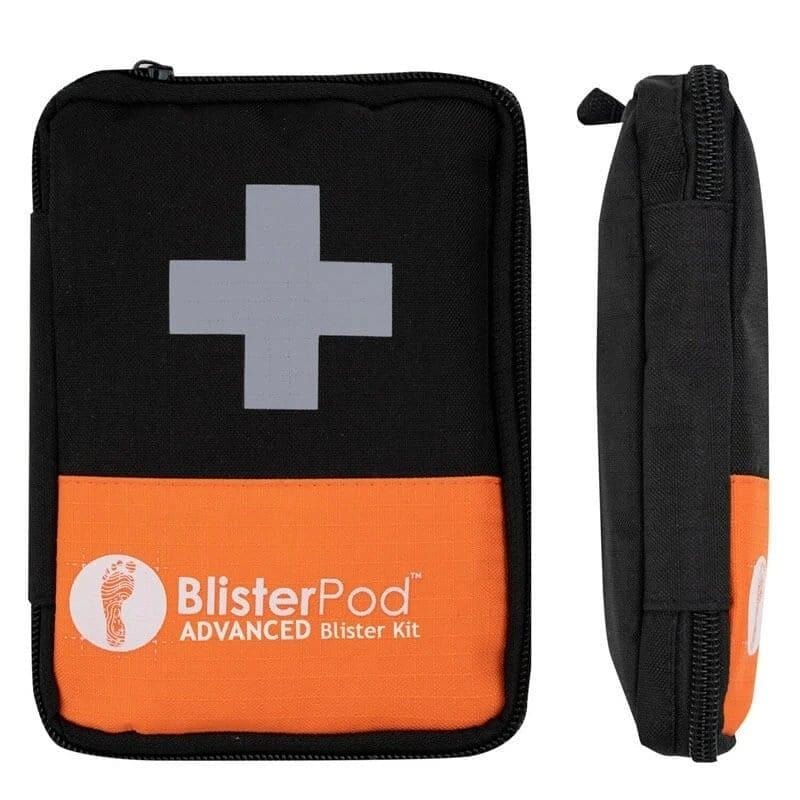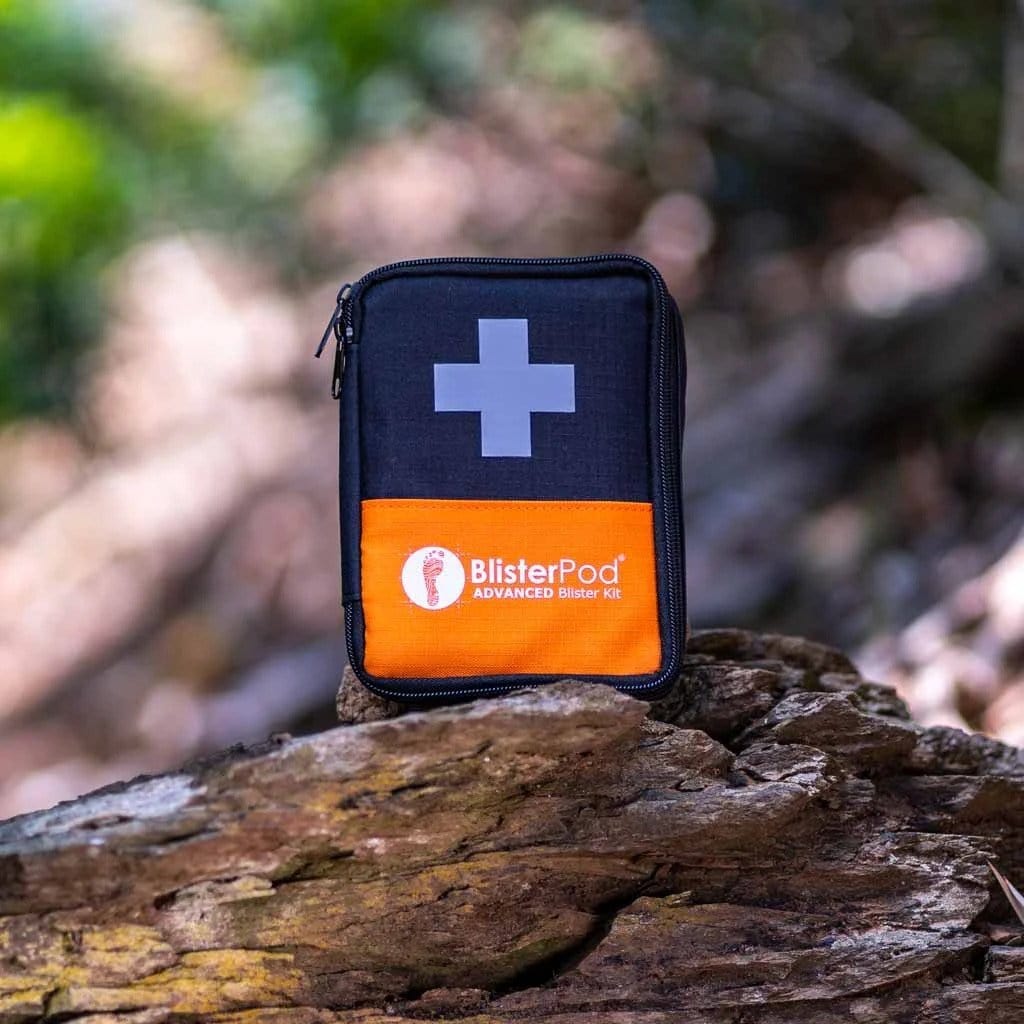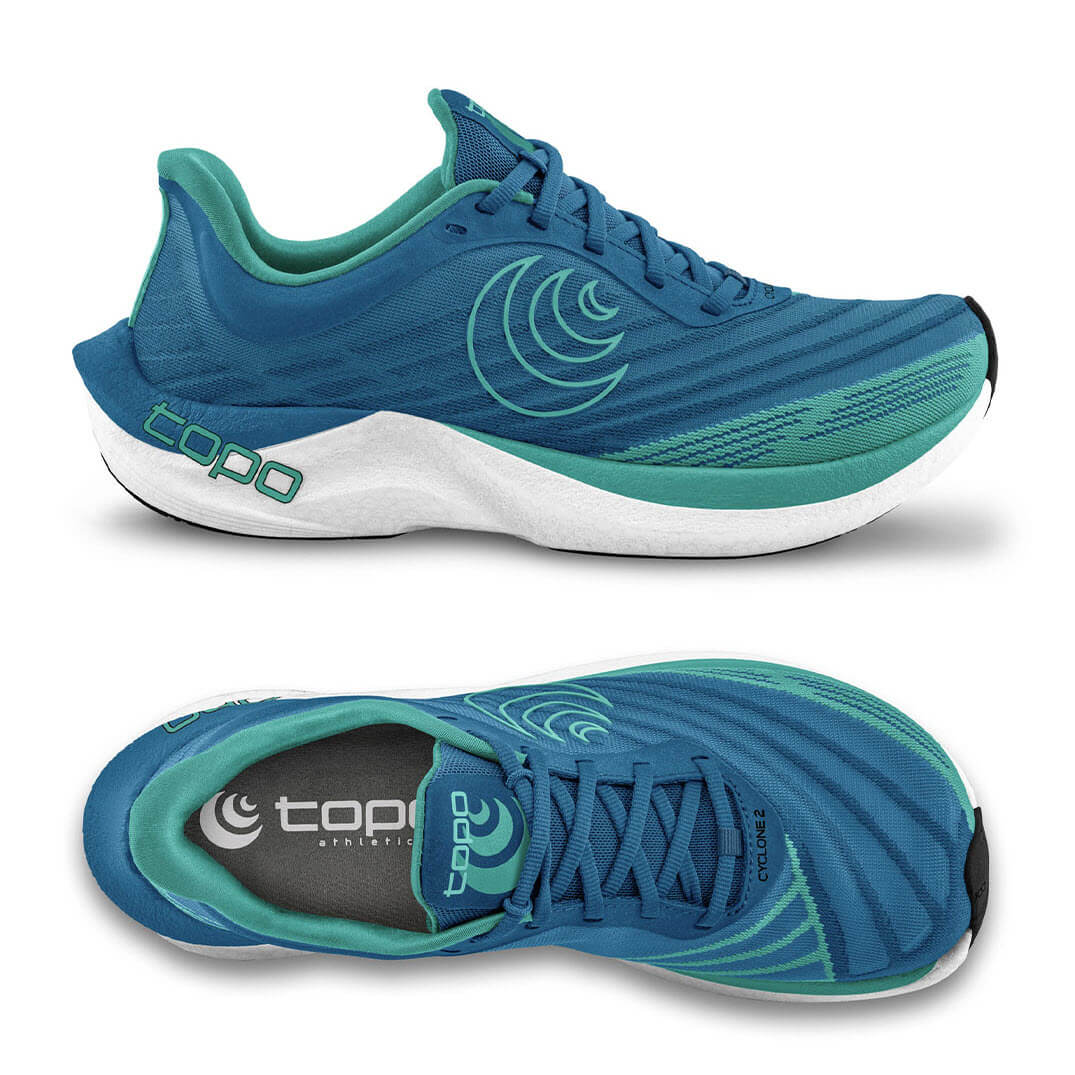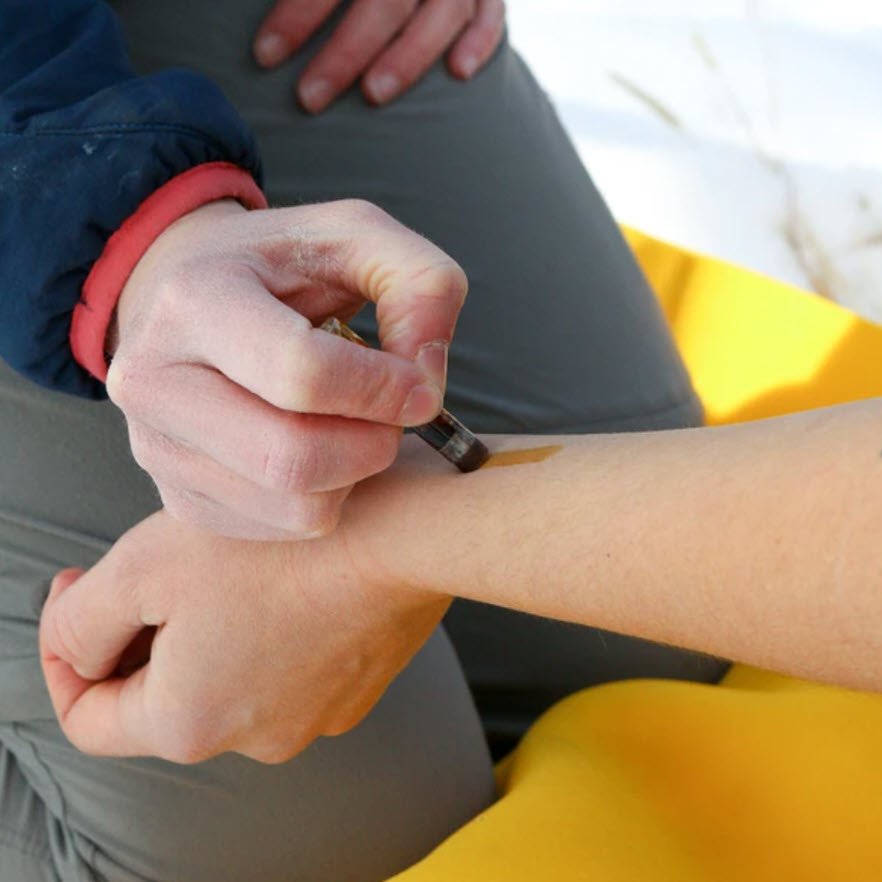I’ve never been to the desert. I haven’t camped in 15 years. I’m not good with the cold and I prefer to shower more than once a week! It’s safe to say, I’d never done anything like Big Red Run before. And I wasn't even running :) 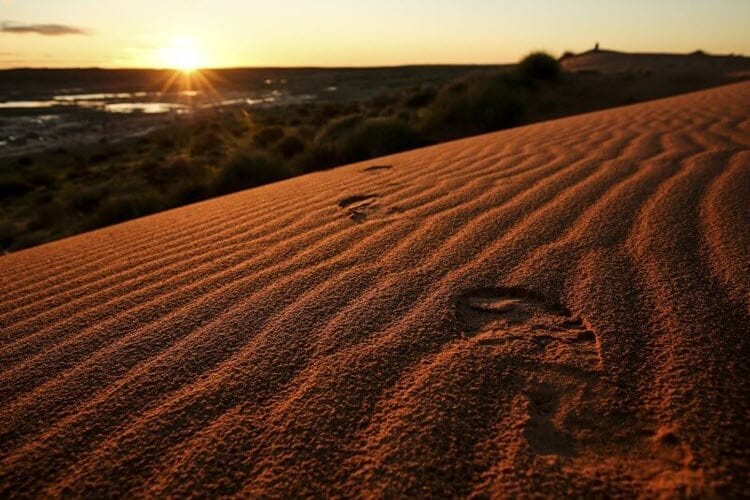
"Big Red" sand dune with flooding visible in the background ©IANCORLESS.COM - ALL RIGHTS RESERVED
I was expecting red sand and cold nights. The Simpson Desert delivered on both. What I wasn’t expecting was the rare version of the desert we were treated to - fields of lush vegetation, boggy clay pans and flooding.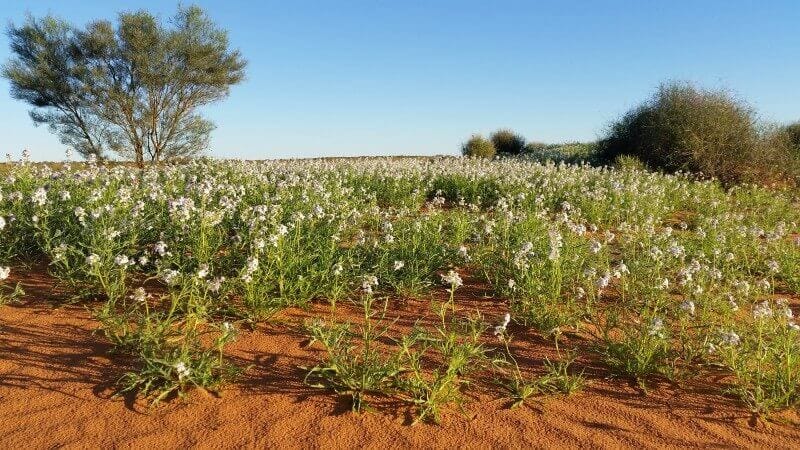 Green plains and wildflowers (photo from Kate Tasker)
Green plains and wildflowers (photo from Kate Tasker)
Of course, I was there to help manage the runners’ blisters, along with a team of nurses, doctors and a medical student. As I reflect on the results we achieved as a medical team, I can safely say this has been the best experience my profession has afforded me - one I’m proud to have been a part of.
Following is an overview of what worked and what didn’t in regard to blisters at the Big Red Run 2016.
1) Foot blisters are the number one injury in ultramarathon
Reducing the impact of blisters on the runners was a primary aim of BRR 2016.
Eighty five percent of all medical visits last year at BRR 2015 last year were for foot blisters! In real numbers, that was 700 blister treatments for 78 runners over 6 days!!
Reducing the impact of foot blisters was a primary aim of Big Red Run 2016. A secondary aim was to empower athletes to more effectively prevent/treat their own blisters in future events, including non-BRR events. So the pre-race blister education campaign was more comprehensive this year.
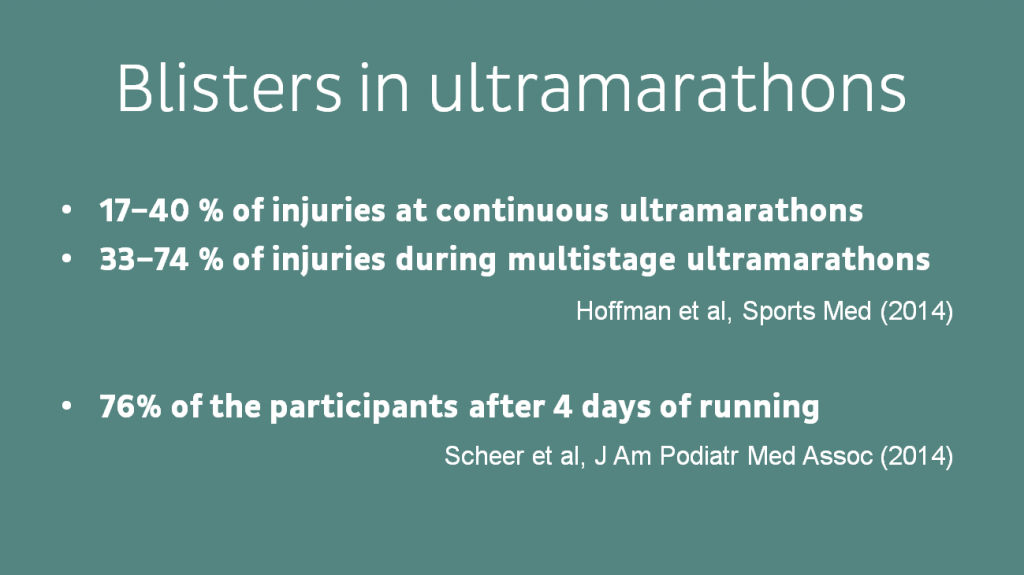
Blister prevalence in ultramarathon - From the blister presentation at the pre-race runners’ brief
Here’s how we attempted to achieve these aims:
Pre-race:
- The Big Red Run blister Facebook group – This started 4 ½ months before the event. While 78 joined the group, about half were runners. We covered everything an athlete needs to think about in preparation for an event like BRR, from prevention to treatment and blister kit contents.
- Taping demonstrations – Three 10 minute sessions demonstrating taping of the toes, heels and the ball of the foot were held on the day before the event. About 75 runners took advantage of these.
- The blister presentation at runners briefing – A 10 minute presentation highlighting the importance of hot-spot management was presented on the day before the event to all runners.
- Preparing the medical team – A 30 minute information session was attended by the medical team who were going to be involved in blister management.
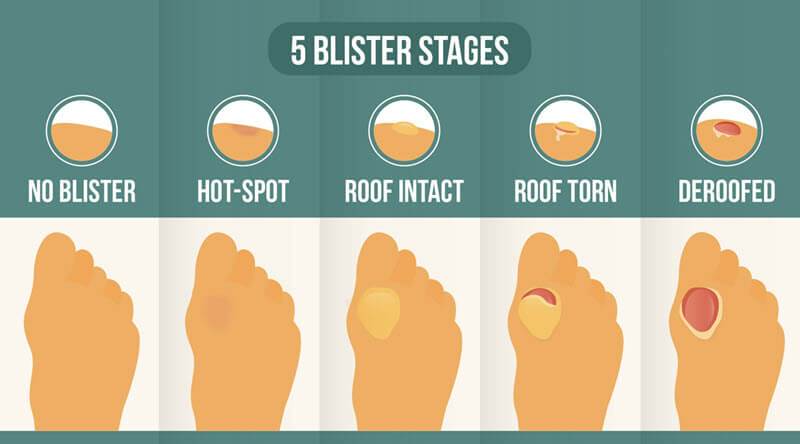
The 5 blister stages - From the blister presentation at the pre-race runners’ brief
Mid-race:
Discussions about the cause of the particular blister at the time of treatment – I was keen for runners to take away an understanding of why they got this blister and what they could have done to prevent it (knowledge and empowerment for better outcomes next time!).Helping the athlete choose the most appropriate treatment for their blister - For example, to lance or leave intact; to use a donut pad or taping. This is an important aspect - having runners buy into their treatment. It helps to prepare them for future events and training regimes where they might encounter blister problems again. Have a look at the three most common blisters we saw at BRR 2016.
Suggesting items to add to runners’ blister kits – It was compulsory for runners to bring their own blister kits to the medical tent if they wanted blister treatment. The race organisers were keen this year to leave the impression that it’s the runner’s responsibility to bring what they might need for blister prevention and treatment. Some kits were fantastically stocked, others not so much. In future editions of the race, it would be great to take the mandatory blister kit further to make it a truly helpful resource. I'll be compiling a 6-Day Ultra Blister Kit soon.
2) More consultations on Days 1 and 2 than expected - Was it a blessing in disguise?
We saw a lot more runners than we expected to on Day 1 and Day 2, both at checkpoints and in the medical tent. The number was higher compared to last year. Adam and I started to look at each other sideways – this wasn’t good.
But as time wore on, one thing became clear – there were a lot of runners asking us to check out hot-spots. Many of those required no intervention from us, just advice to tape that area the next day. For others, it was clear there was a problem in this area and it gave the medical team an opportunity to implement preventive action (taping, ENGO patches, gel toe sleeves, paddings). It seems the runners had taken the preventive message on board and were acting on it. Anguish turned to optimism and my heart warmed a little.
On later reflection, this early onslaught made perfect sense. Research shows that the majority of blisters happen by the second day. If you have a concerted focus on early intervention on Day 1 and 2, you can set yourself up for a race without blisters, or as close to it as possible. I believe this played a big part in our overall blister results.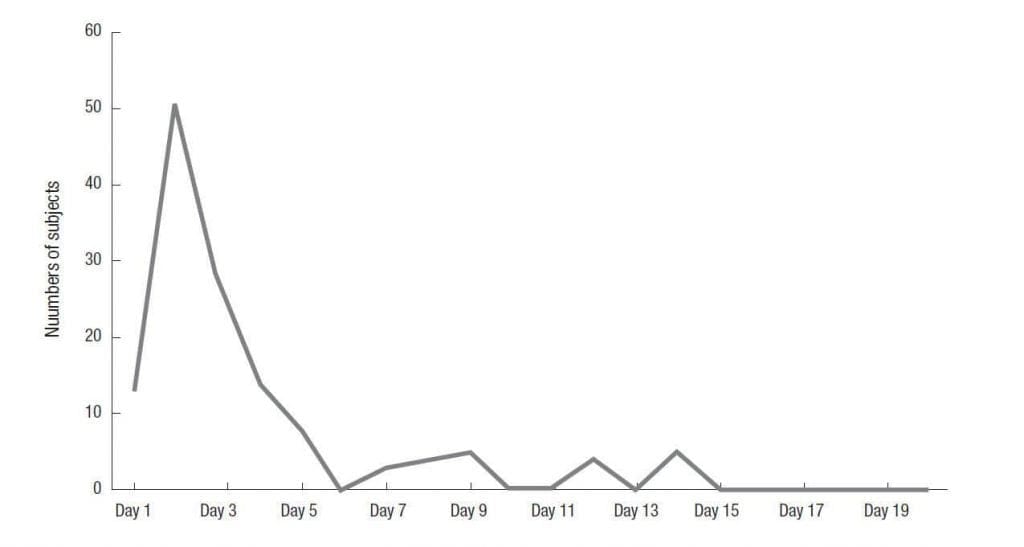 An example of how the majority of foot blisters occur on day two (Choi et al, 2013). Similar results were found by Reynolds et al (1999) who studied injuries in a group of 218 male light infantry soldiers on a 5-day 161km cross country march.
An example of how the majority of foot blisters occur on day two (Choi et al, 2013). Similar results were found by Reynolds et al (1999) who studied injuries in a group of 218 male light infantry soldiers on a 5-day 161km cross country march.
Forty three of 45 blisters occurred on day two of the march.
3) 20% more runners, 20% fewer blisters & the blisters were less severe
Last year’s medical stats showed 700 blister treatments for 78 runners over 6 days.
So with 93 runners, we were looking at upwards of 830 blister treatments - yikes! Thankfully this didn’t come to pass. In spite of there being 20% more runners, there were 20% fewer blisters treatments. And anecdotally, according to Big Red Run doctor Dr Adam Brownhill, this year’s blisters were less severe.
We pondered the reasons why…
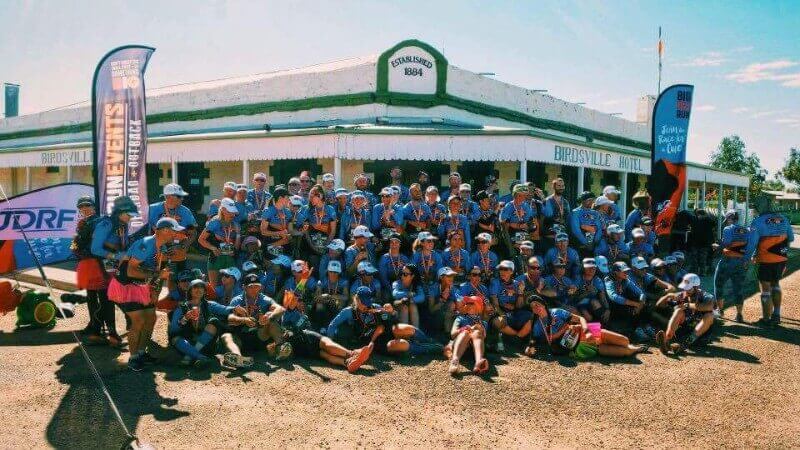
BRR 2016 finishers outside the iconic Birdsville Hotel (Photo from Leon Raymond)
Reason 1
Last year was hotter and drier. This year was wet. Record-breaking rains in Birdsville in the month before Big Red Run produced lush vegetation where sand hills and barren plains usually exist. We saw mild to moderate cases of maceration from Day 1 resulting from running through the dew-laden grasses that aren’t normally there. As explained previously, it’s generally accepted that skin damage from environmental moisture (rain, puddles, river-crossings) is worse than that from perspiration. So this had the potential to wreck feet early on and set them up for a world of blister problems. As a medical team, we started to get nervous.
Reason 2
This year we had half an inch of rain on Day 2 which turned an otherwise perfect camp ground to a clay pan that made getting from one’s tent to the portaloo a considerable undertaking. I can only imagine what it was like to run on. Waiting for the runners to return on that second day was tense. We were expecting “blister-geddon”. It didn’t happen. Yes we saw a couple of nasty maceration cases, but none of them had torn skin – what a relief!
Early running was hard as the soft clay ground just stuck to the runners shoes making not only the size but more importantly the weight of the shoes considerably challenging. Add to this all grip being removed due to the volume of wet, sticky clay that built up in the soles.
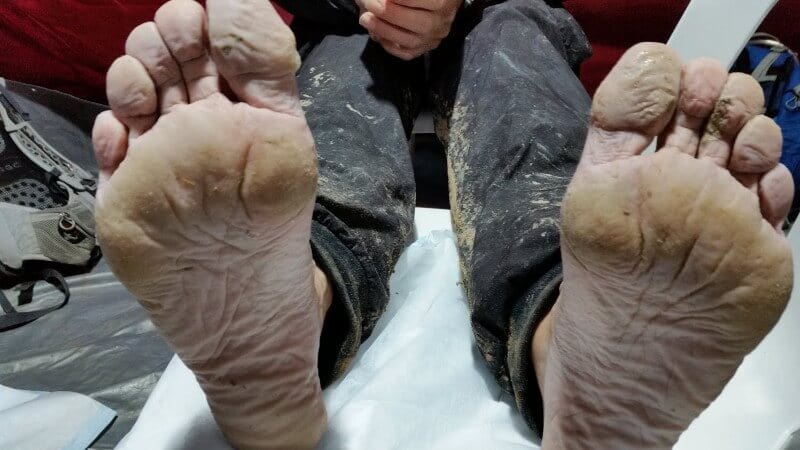
Macerated feet at the end of day 2.
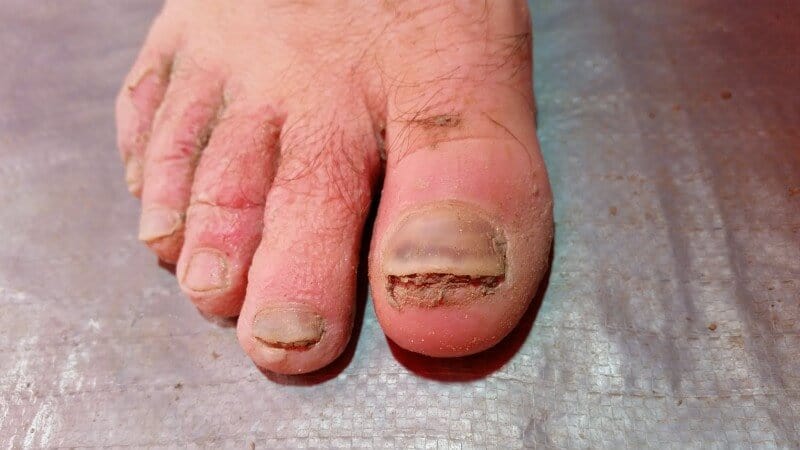
Macerated toes, complicated by dermatitis on Day 2.
Reason 3
The slipperiness of the clay and the uneven terrain set up the potential for lots of blisters and torn skin due to the side-to-side motions of the foot within the shoe. For some reason, this didn’t happen. Why? We can only assume that with the stickiness of the mud, stride lengths were shortened, and this had a greater beneficial effect than the negative effect of the terrain, extra shoe weight and soggy skin. It was an unlikely result, but one we were more than happy to see.
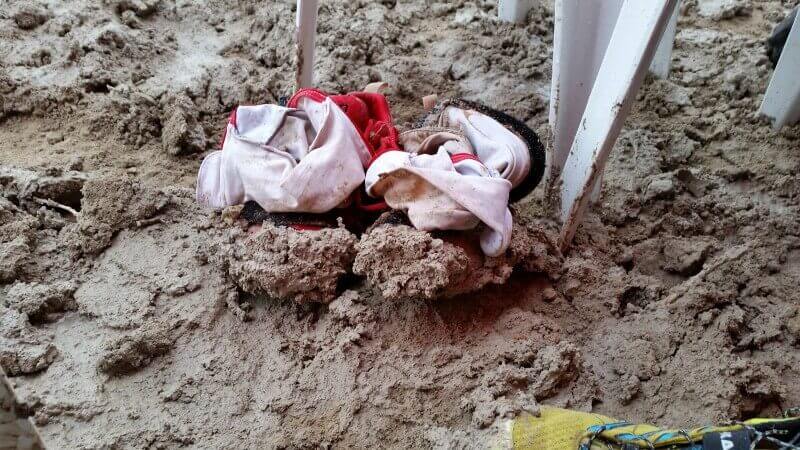
Clay stuck to shoes and added enormous weight to be lifted with each step
Reason 4
An enforced rest day on Day 3 helped athletes dry their shoes and feet by the campfire without the continuing mechanical insult of running. There’s no doubt this went some way to reducing the effect of blisters on Days 4 and 5.
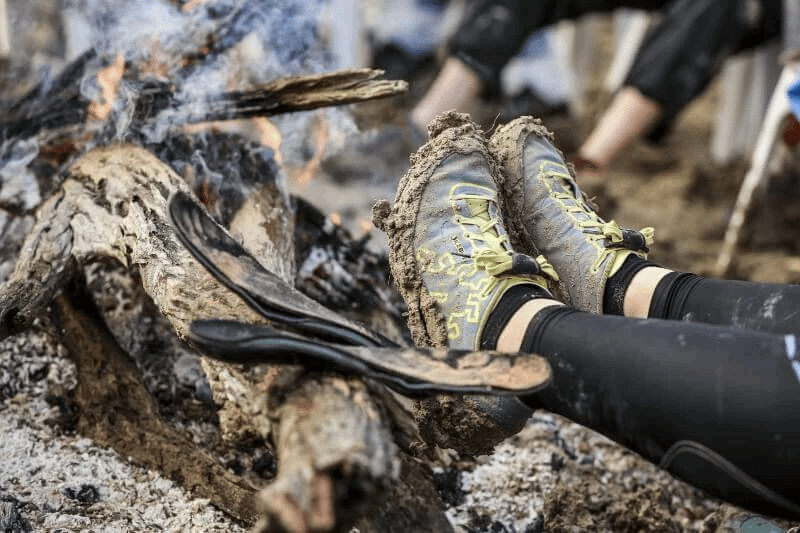
Drying shoes and insoles by the BRR campfire (©IANCORLESS.COM - ALL RIGHTS RESERVED)
In conclusion, at the end of day 2, the runners’ feet were better than they had any right to be. I’d like to think the education campaign had a fair bit to do with that. But maybe it was more about the cooler conditions. The enforced rest day would have capitalised on that advantage and set the runners up for the rest of the race.
4) We popped a lot of blisters, but no infections
As I mentioned, the blisters we saw this year were less severe than last year. Specific improvements included:
- No infected blisters this year
- Only one deroofed blister
- Only one inappropriate use of Compeed – to the runner’s credit, there was an attempt to not put the Compeed over the blister, rather to create more of a donut pad with it. It didn’t work, a blood blister ensued. We dealt with it (lanced, dressed and I think donut pad) and the runner continued on to finish the race. Moral of the story … Compeed does not prevent blisters. And it should only ever be used on deroofed blisters (even then, preferably towards the end of a 6-Day event).
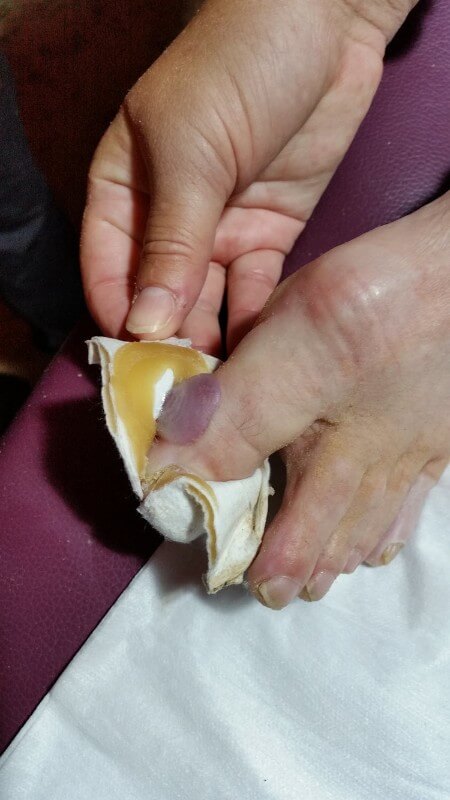
Blood-filled big toe edge blister in spite of the use of Compeed (photo from Catherine Hsu)
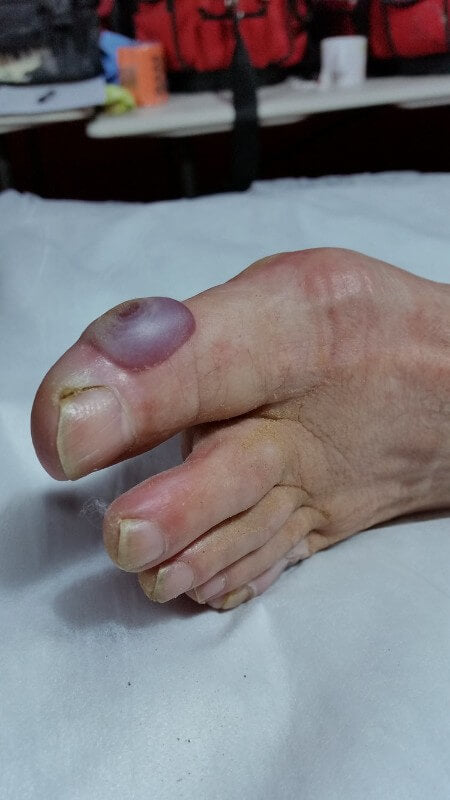
Blood-filled big toe edge blister in all its glory (photo from Catherine Hsu)
5) Assisted self-management didn’t work, in a good way
I’ve provided foot care at a few races, but never been part of a medical team. Normally I’m on my own and left to my own devices in every way. To be involved with an event with existing structure and protocols was an eye-opener and one I wasn't prepared for – in a good way!
At the prospect of upwards of 830 blister treatments in 6 days, I was keen to implement the concept of “assisted self-management”. In short, it didn’t work.
Why?
We had a team of medical professionals, most of whom were runners or active people in different fields, busting to learn basic and advanced blister management techniques. To their credit and to my delight, they wanted to get down and dirty with blisters so they could upskill themselves – for their own blister needs and to help others in the future. It just didn’t make sense to limit their hands-on time at the Big Red Run event.
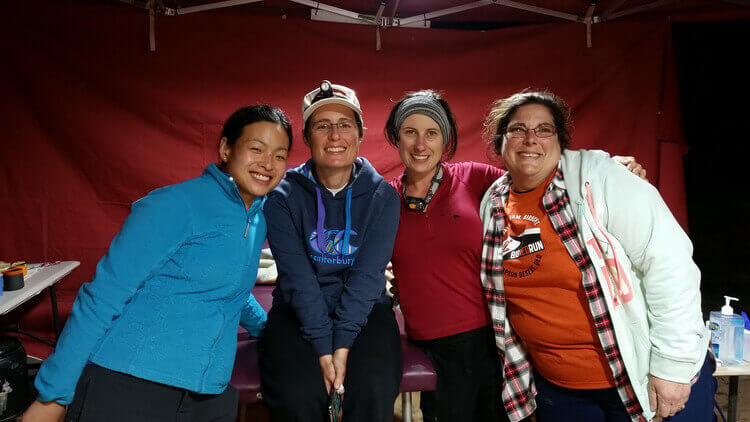
Catherine (GP), Me (podiatrist), Kate (medical student), Kim (nurse) (Photo from Kate Tasker)
I haven’t abandoned the idea of assisted self-management – far from it. I think it is an important progression for the provision of foot care at races for the reasons I’ve mentioned in this article. It encourages the athlete to educate themselves and develop the blister management skills they need. I can’t over-state how keen I am to see this happen more at races.
Conclusion
Big Red Run 2016 is done and dusted. My personal thanks to:
- Greg Donovan, Lucas Trihey and Adam Brownhill for trusting me to help minimise the impact of foot blisters on the runners.
- The runners for their high spirits, enthusiasm and for being open to the advice and treatment given by the blister team.
- The medical team for their eagerness to learn about blister management, for working so hard and for taking lots of blister photos for me – the blister clinic that went to well after midnight on Day 5 was the best fun!
- All of the volunteers who made the race happen under unprecedented trying conditions.
- And my tent-mates Karen and Lisa for providing the laughs!
